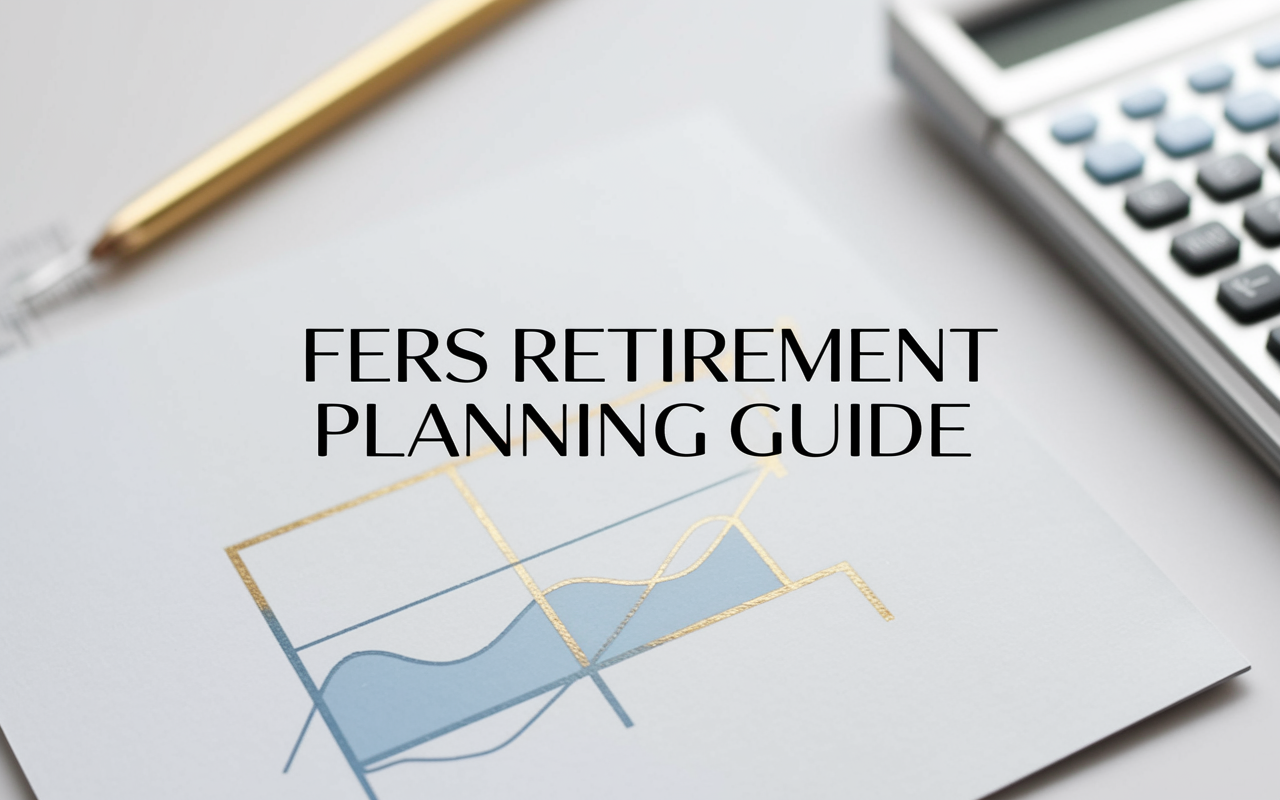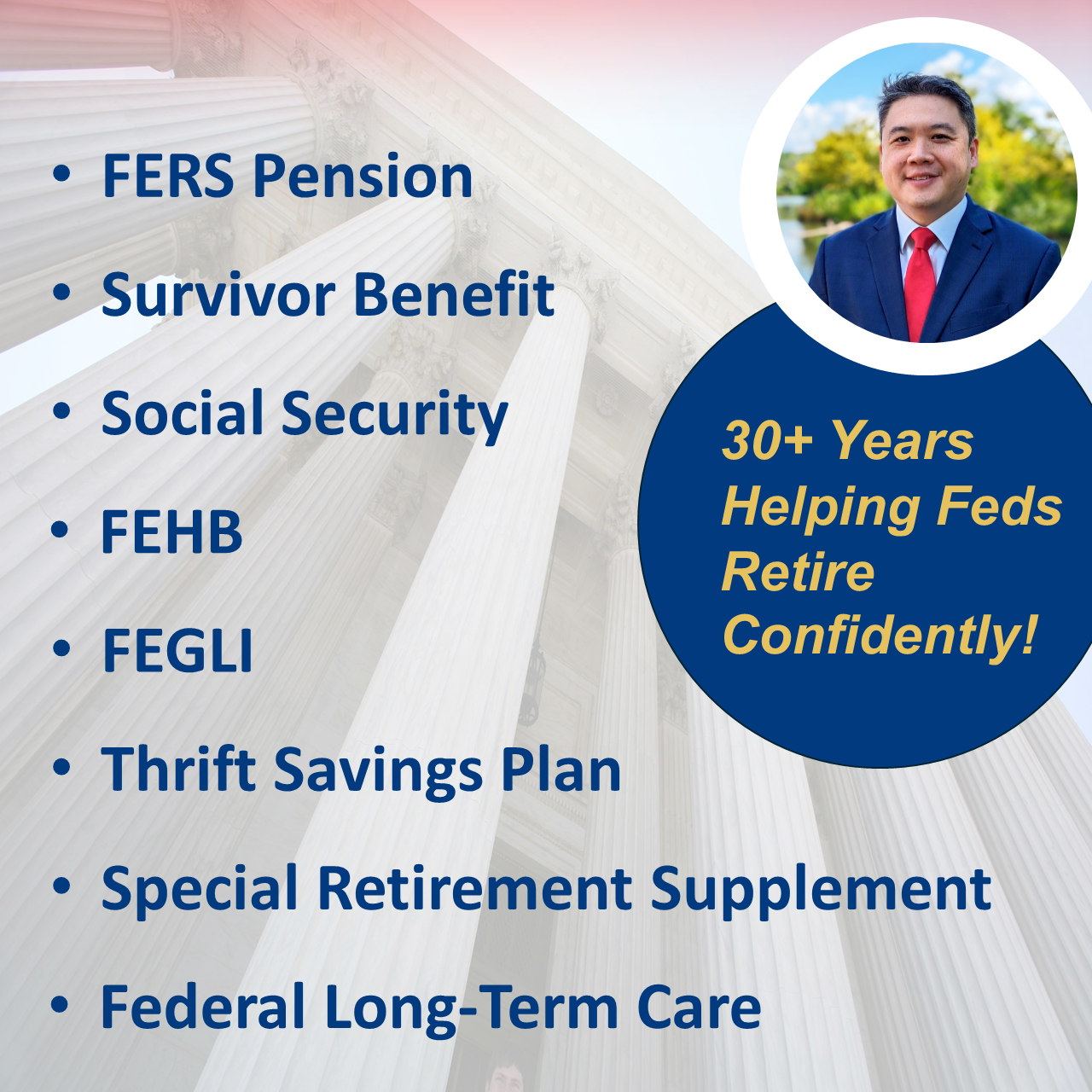FERS Retirement Planning: Your Essential Guide to a Secure Future
Introduction to FERS Retirement
When the Federal Employees Retirement System (FERS) took effect on January 1, 1987, it represented a modern approach to securing the future of federal workers across all branches of government. FERS was introduced to replace the older Civil Service Retirement System (CSRS), ensuring that federal employees could benefit from a more flexible and portable retirement program. Today, FERS covers the vast majority of active civilian employees—nearly 98%—reinforcing its position as the cornerstone of government retirement benefits.
At PlanWell, we’ve spent more than 30 years guiding federal employees through their unique financial journeys. As a financial advisor for federal employees, we understand that retirement approaches with questions about timing, eligibility, and making the most of federal retirement benefits. With designations such as ChFEBC, CFP, and AIF—and our proprietary Fed-Expert Financial Blueprint—we’re dedicated to ensuring federal workers can retire confidently.
Understanding Federal Employee Retirement Benefits Under FERS
FERS is often called a three-tiered system because it comprises the Basic Benefit Plan, Social Security, and the Thrift Savings Plan (TSP). Each tier weaves together to elevate your retirement security.
1. Basic Benefit PlanThis portion is your defined benefit pension—funded by both you and the government. Upon retirement, you receive a monthly annuity calculated using your years of service, your high-3 average salary, and a defined pension multiplier. It functions as a steady base, providing predictable income for life.
2. Social SecurityUnder FERS, federal employees pay into Social Security at standard rates, just like private-sector workers. You can choose to begin Social Security benefits as early as age 62 (subject to reduced payments) or wait beyond your full retirement age to increase your monthly benefit.
3. Thrift Savings Plan (TSP)The TSP is a defined contribution plan, similar to a 401(k). Your agency automatically contributes 1% of your basic pay, and will match an additional 4% if you contribute at least 5% of your salary. This arrangement provides unique opportunities for tax-deferred (or Roth) growth, catch-up contributions for those over 50, and diversified investment options through various TSP funds. Recent enhancements even allow higher catch-up contributions—and in some cases require high earners to direct these contributions into Roth accounts.
Calculating Your FERS Pension
One of the most important steps in FERS retirement planning involves understanding how your Basic Benefit Plan is calculated. The formula is straightforward, though the details can vary by age and length of service:
High-3 Salary x Years of Service x Pension Multiplier
The high-3 salary is the average of your highest three consecutive years of basic pay. (Learn more about calculating your high-3.) The standard pension multiplier is 1% for most employees, rising to 1.1% if you retire at age 62 or older with at least 20 years of service.
Below is an illustrative table to demonstrate how your estimated FERS pension might look under different scenarios:
|
High-3 Salary |
Years of Service |
Multiplier |
Annual Pension Estimate |
|---|---|---|---|
|
$60,000 |
20 |
1% |
$12,000 |
|
$75,000 |
25 |
1% |
$18,750 |
|
$90,000 |
30 |
1.1% |
$29,700 |
As you can see, an older employee with a longer career and a higher salary can expect a more substantial pension. Even subtle changes in years of service or salary level can make a big difference. This is why verifying your “high-3” earnings and years of service is so critical.
Retirement Eligibility and Options
FERS recognizes that federal employees have different timelines and needs, which is why there is more than one road to retirement. Each path has distinct requirements:
|
Retirement Type |
Minimum Age |
Minimum Service |
Key Conditions |
|---|---|---|---|
|
Immediate |
62 |
5 |
Meets standard age/service combo |
|
Early |
50 |
20 |
Downsizing or restructuring (VERA) |
|
Deferred |
N/A |
5 |
Leaves federal service, claims later |
|
Disability |
N/A |
18 months |
Inability to perform current duties |
For most federal employees aiming for a standard retirement, immediate retirement—commonly reached at age 62 with at least five years of service or age 60 with 20 years of service—tends to be the most common. However, if you started federal service in your early 20s and built up 30 years of service, you could even retire at your Minimum Retirement Age (MRA), which can be between 55 and 57 depending on your birth year.
Survivor Benefits, Health Insurance & Other Considerations
Although the pension is a central part of FERS, additional elements like survivor benefits and health insurance can make a significant difference in your family’s long-term security.
Survivor annuities ensure that a portion of your Basic Benefit Plan continues to provide income to a spouse or beneficiary, offering peace of mind in the event of your death. Meanwhile, you can typically carry your Federal Employees Health Benefits (FEHB) coverage into retirement—bearing in mind that you usually need to be enrolled in FEHB for at least five years before the date you retire. Federal Employees’ Group Life Insurance (FEGLI) can also continue, though many retirees opt to right-size their coverage as premium costs may rise.
In retirement, the Cost of Living Adjustment (COLA) helps to preserve your purchasing power. Under FERS, these adjustments are based on inflation metrics, but if inflation is between 2% and 3%, your COLA is capped at 2%. For 2025, FERS retirees can expect a 2.0% COLA. Though it may seem small, this built-in adjustment is a vital hedge against rising costs over the span of a lengthy retirement.
Another notable benefit beyond standard retirement is the Special Retirement Supplement (SRS), which can bridge the gap between your FERS retirement date and age 62. The SRS mimics the Social Security benefit you’ve earned under federal service, but it automatically stops once you turn 62.
Strategic FERS Retirement Planning
Retiring under FERS is much more than just meeting an eligibility date. A strategic approach is critical to turning a collection of benefits into a secure lifestyle. This is where depth of knowledge and careful planning can really pay off.
One of the most frequently overlooked factors is Service Computation Date (SCD) verification. Because your SCD determines how your federal service is aligned with your TSP contributions, leave accrual, and ultimate pension, it’s imperative to confirm that HR has your dates of service correct—especially if you had any breaks or rejoined federal service after time in the private sector.
Next, give ample attention to maximizing TSP contributions. If you aren’t setting aside at least 5% to trigger the full agency match, you’re leaving free money on the table. For those over 50, catch-up contributions provide an added boost to your TSP. And if you’re between 60 and 63 starting in 2025, you may be eligible for even higher catch-up contribution limits—especially helpful if you’re behind on retirement savings.
For many, the interplay between claiming Social Security and receiving the FERS pension prompts tricky timing questions. Claiming Social Security too early can lock in a lower monthly benefit for life, while waiting until full retirement age (or even beyond) means tapping other resources in the interim. An expert advisor can weigh your unique goals and circumstances to suggest the best approach.
We also encourage you to keep beneficiary forms updated for both your pension and TSP accounts. Too often, employees forget to adjust these after major life events, potentially causing confusion or unintended consequences for loved ones. For more guidance, see why federal employees should verify beneficiary designations.
Common Pitfalls & How to Avoid Them
An awareness of common mistakes can help you sidestep costly missteps:
Overlooking Unused Sick Leave: Under FERS, unused sick leave can boost your creditable service, effectively increasing your pension. Failing to familiarize yourself with this provision can mean losing out on months of service credit.
Underestimating Healthcare Costs: Federal Employees Health Benefits (FEHB) continues into retirement, but premiums can feel heavier once you’re on a fixed income. Proper budgeting and exploring secondary coverage options—like Medicare—can help manage these costs effectively.
Early Retirement Penalties: If you retire before meeting certain age and service thresholds, you may face a permanent reduction in your pension or other benefits. Weigh the financial impact carefully, and seek counsel if you’re considering retiring early.
Ignoring Beneficiary Updates: Major life events—marriage, divorce, birth of children, loss of a spouse—mean you may need to adjust your beneficiary designations. Regularly confirm those forms reflect your current wishes.
Next Steps & Getting Professional Help
No two federal careers are identical, and the technicalities of FERS are substantial. The difference between a smooth, confident retirement and one mired in regret often comes down to expert guidance. Over PlanWell’s three decades of working with federal employees, we’ve refined our Fed-Expert Financial Blueprint to seamlessly integrate federal benefits with broader investment, tax, and estate strategies.
Because potential changes—like a shift to “High-5” salary calculations or increased employee contribution rates—can drastically alter retirement assumptions, staying ahead of policy changes also matters. This is where up-to-date insight is invaluable.
If you’d like to dive deeper into how to maximize your FERS retirement, we invite you to sign up for one of our free Federal Retirement Planning Workshops. These workshops offer hands-on guidance, real-life case studies, and personalized feedback on the strategies that matter most to you and your family.
Conclusion
The Federal Employees Retirement System provides a powerful framework, offering a consistent pension under the Basic Benefit Plan, additional security through Social Security, and valuable growth opportunities via the Thrift Savings Plan. Navigating these moving pieces is easier when you have clarity on how the puzzle fits together—especially with professional guidance.
With over 30 years of specializing in federal retirement planning—and credentials like ChFEBC, CFP, and AIF—PlanWell stands ready to help you make fully informed decisions about your future. Whether you are weeks or years away from retirement, establishing a proactive strategy can lay the foundation for years of confidence and financial peace of mind. If you’re ready to explore your next steps, join us for an upcoming workshop or reach out directly. We look forward to helping you navigate a secure retirement under FERS.










